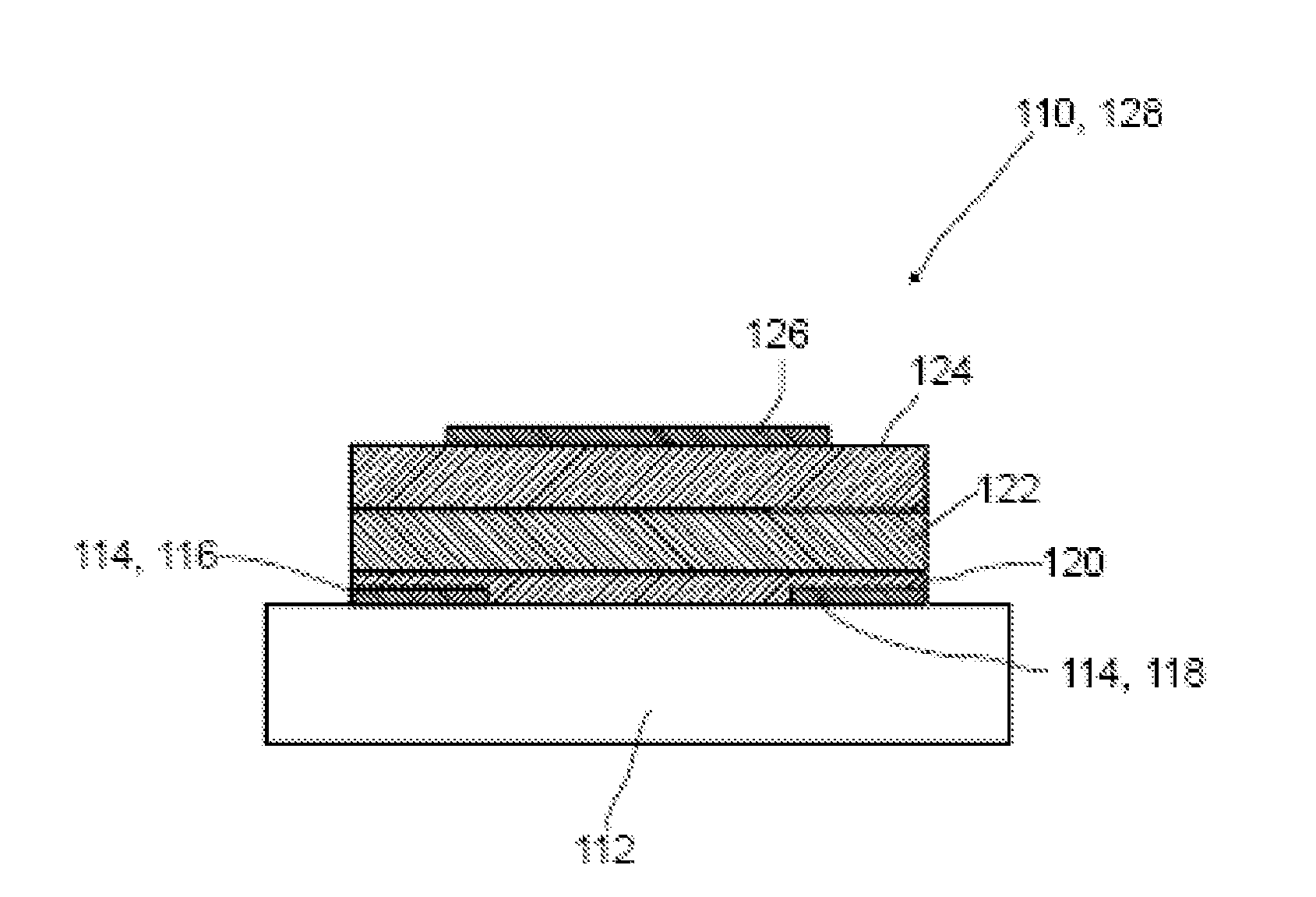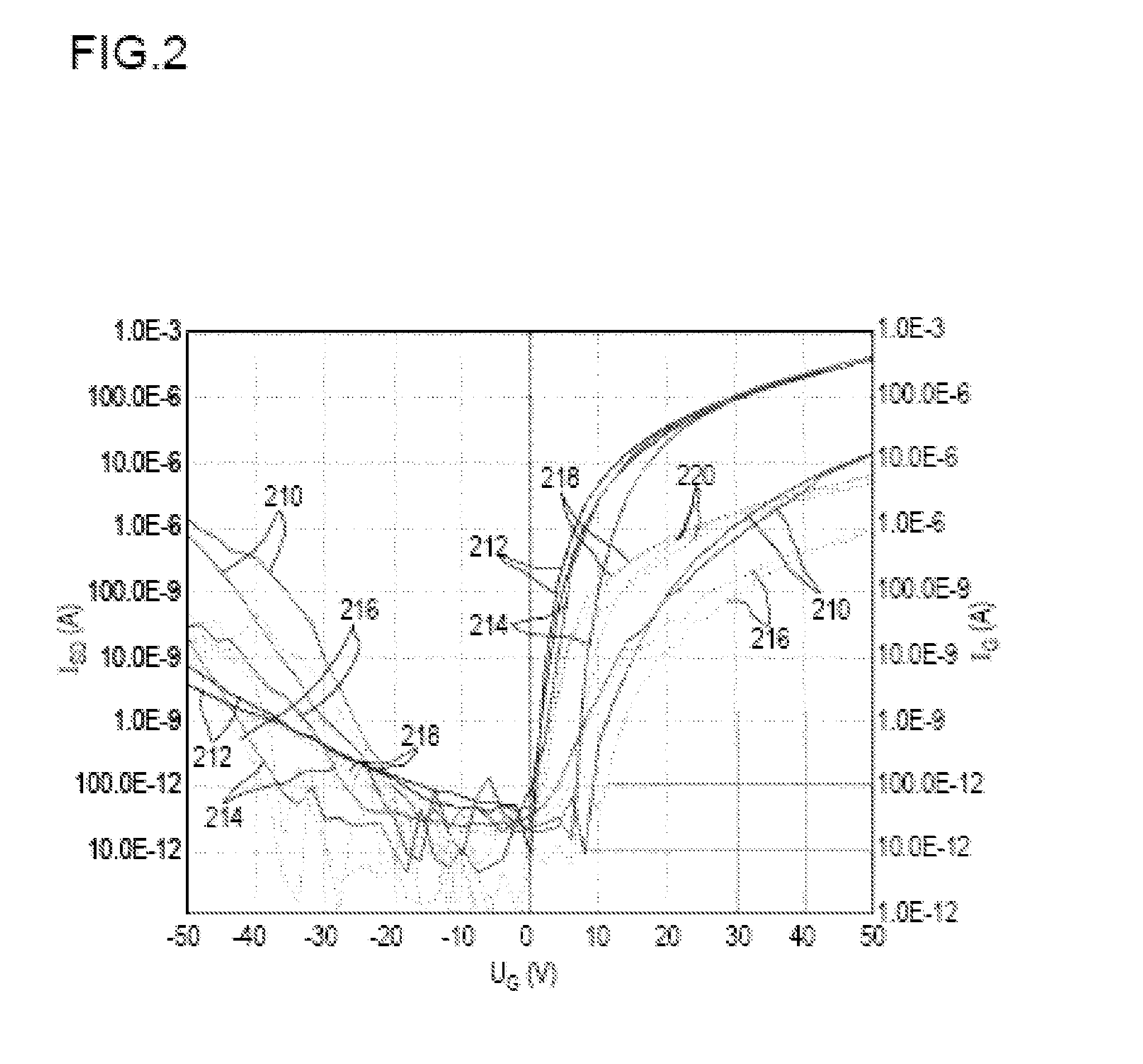Method for producing an organic semiconductor device
a semiconductor device and organic technology, applied in semiconductor devices, solid-state devices, thermoelectric devices, etc., can solve the problems of reducing the efficiency of semiconductor devices, affecting the performance of semiconductor devices, etc., to achieve the effect of suppressing the ambipolar charge carrier transpor
- Summary
- Abstract
- Description
- Claims
- Application Information
AI Technical Summary
Benefits of technology
Problems solved by technology
Method used
Image
Examples
example 1
Polymer Synthesis
[0221]The following examples describe the preparation of certain polymers of the present teachings and related intermediates.
example 1a
Preparation of poly{[N,N′-bis(2-ethylhexyl)-1,4,5,8-naphthalene diimide-2,6-diyl]-alt-5,5′-(2,2′-bithiophene)} [P(NDI2EH-T2)]
Preparation of 2,6-dibromonaphthalene-1,4,5,8-tetracarboxydianhydride (NDA-Br2)
[0222]A mixture of 1,4,5,8-naphthalenetetracarboxylic dianhydride (2.8 g, 10.3 mmol) and oleum (20% SO3, 100 mL) was stirred at 55° C. for 2 hours. To this mixture, a solution of dibromoisocyanuric acid (3.0 g, 10.5 mmol) in oleum (50 mL) was added over 40 mins. The resulting mixture was then warmed to 85° C. and maintained at this temperature for 43 hours. After cooling to room temperature, the reaction mixture was poured onto crushed ice (420 g), diluted with water (400 mL), and then stirred at room temperature for 1 hour. The resulting precipitates were collected by centrifugation, washed with water and methanol, collected by centrifugation and finally dried under vacuum, leading to a greenish yellow solid (3.6 g, 8.5 mmol, yield 82.2%). Elemental Analysis (calc. C, 39.47; H, 0.4...
example 1b
Preparation of poly{[N,N′-bis(2-ethylhexyl)-1,4,5,8-naphthalene diimide-2,6-diyl]-alt-2,5-thiophene} [P(NDI2EH-T1)]
Preparation of Copolymer P(NDI2EH-T1)
[0227]Under argon, a mixture of NDI2EH-Br2 (Example 1A, 84 mg, 0.13 mmol), 2,5-bis(trimethylstannyl)thiophene (53 mg, 0.13 mmol), and Pd(PPh3)2Cl2 (3.0 mg, 0.004 mmol) in anhydrous toluene (5 mL) was stirred at 90° C. for 4 days. Bromobenzene (0.3 mL) was then added and the resulting mixture was stirred at 90° C. for an additional 12 hours. Upon cooling to room temperature, a solution of potassium fluoride (1.2 g) in water (2.5 mL) was added. This mixture was stirred at room temperature for 2 hours and the precipitate collected by filtration. The solid was taken with a small amount of chloroform, methanol was added, and the resulting solid collected by filtration. This procedure was repeated using chloroform and acetone, leading to a deep blue solid as the crude product (20.0 mg, yield 20.7%). Elemental Analysis (calc. C, 71.55; H, 6...
PUM
| Property | Measurement | Unit |
|---|---|---|
| channel length | aaaaa | aaaaa |
| channel length | aaaaa | aaaaa |
| conductivity | aaaaa | aaaaa |
Abstract
Description
Claims
Application Information
 Login to View More
Login to View More - R&D
- Intellectual Property
- Life Sciences
- Materials
- Tech Scout
- Unparalleled Data Quality
- Higher Quality Content
- 60% Fewer Hallucinations
Browse by: Latest US Patents, China's latest patents, Technical Efficacy Thesaurus, Application Domain, Technology Topic, Popular Technical Reports.
© 2025 PatSnap. All rights reserved.Legal|Privacy policy|Modern Slavery Act Transparency Statement|Sitemap|About US| Contact US: help@patsnap.com



